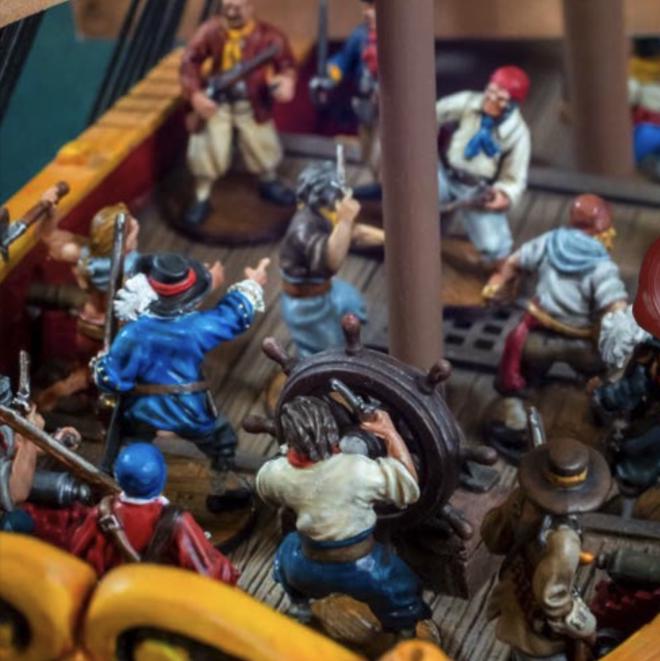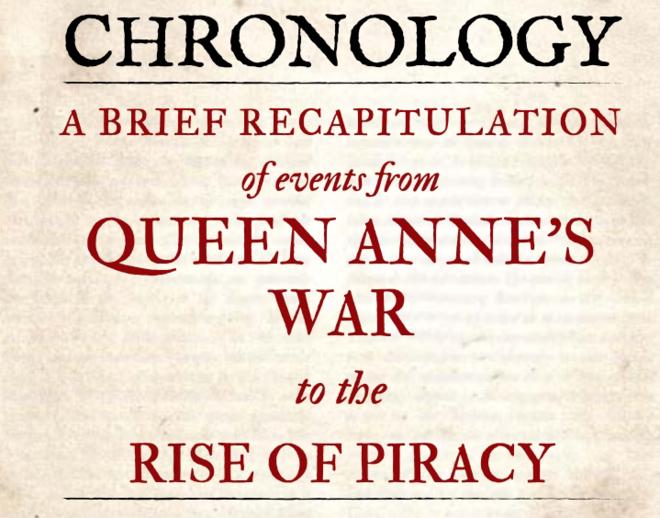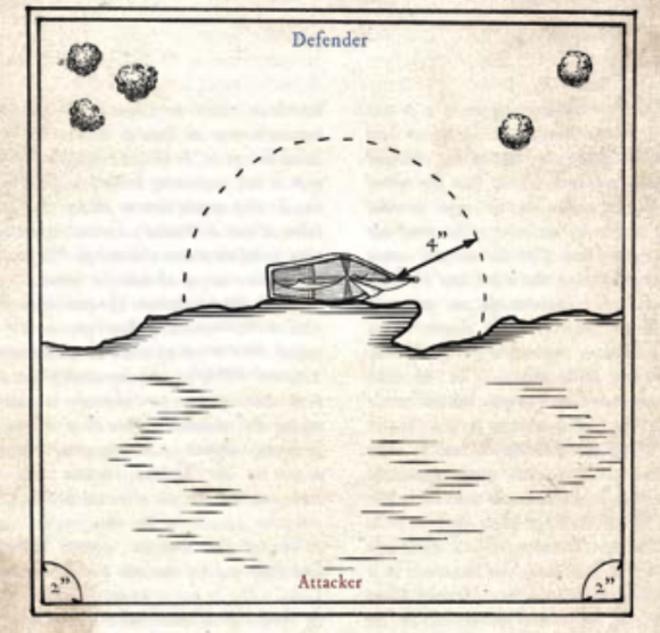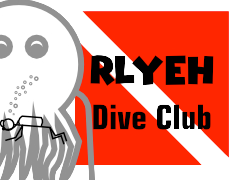Once more I review a game I haven’t played. Once more I review a pirate game that arguably isn’t quite about pirates… But this time it is about pirates.
Overview #
I felt like, in my review of No Peace Beyond the Line, that the earlier book was essentially the proper “full game” as far as unit lists and similar elements.
The newer Raise the Black is a true expansion, and focused on advancing the timeline to the period of 1700-1730. This means more open warfare up and down the coastline of the Americas as well as the actual pirate era.
The book (PDF to be specific, in my case) maintains the quality design and style of the previous. I appreciate that images of miniatures are “actual game images” or at least staged to resemble such, not heavily processed and posed miniatures.

The PDF cover is striking as they’ve moved from the ‘aged paper’ style of the previous books to a black cover featuring line art of Blackbeard and two other commanders.
Intended Dosage #
The How To Use this Book section continues a stance of “tools not rules” in that the options for how to use these rules can be summarized as “do whatever you want.” My take is that a force from this book may not be fun to play against a force made from the core book or material focused on other eras and I broadly agree: I’d be starting on a bad foot if I was playing a demo or teaching game using the simpler core book forces.
What Has Come Before #
Firelock Game’s historical focus is clear from this and the previous two books. In this we get a Chronology chapter with the fittingly grandiose tile of:

It covers events from 1688 through 1730 over 16 pages, establishing the setting for this expansion.
Pirates (Finally!) #
We’re immediately launched into the force lists starting with a long-expected distinct Pirate chapter. In previous reviews I struggled to consider how I’d label this element of the game: nationality is wrong for many groups so perhaps a term like ‘faction cluster’ would be better. In the book it’s merely a Chapter among many.
Other than omitting the Army Scale listing the factions use a format very similar to the previous No Peace Beyond the Line book. This is improved from the main book and fits well as the factions continue the trend of ranging from generic (“Golden Age Pirates (1700-1730)”) to highly specific (“Blackbeard’s Men (1717-1718)”). The generic factions are very open and flexible while more specific factions may have a single commander and similarly specific rules. The actual Unit format has been iterated on to be similar to the cards the publisher sells, with brief descriptions but a solid listing of the necessary statistics and options.
The Pirates get four factions. They have a single “track” of generic Standard Commanders whom get some flexibility as the Experienced or Seasoned commanders can make one or two selections from a short list of special rules. They have five historical commanders and nine Legendary characters.
Legendary Characters #
Unsurprisingly, the big personalities of the historical pirates who have gone on to be popular historical characters are featured in detail. I can’t blame Firelock Games for giving players what they want. This section isn’t just commanders but includes several ‘personalities’ which can be taken as Fighting Men. Some characters can even be taken as either, albeit in different forces.
| Character | Commander? | Fighting Man |
|---|---|---|
| Edward “Blackbeard” Teach | Yes | Yes |
| Charles Vane | Yes | No |
| Stede Bonnet | Yes | No |
| “Calico” Jack Rackham | Yes | No |
| Olivier “La Buse” Levasseur | Yes | No |
| Bartholomew “Black Bart” Roberts | Yes | No |
| Samuel “Black Sam” Bellamy | Yes | No |
| Black Caesar | Yes | Yes |
| Anne Bonny | No | Yes |
| Mary Read | No | Yes |
Note that I’ve listed them in the order presented, but I’d have put a few together in the listing: Blackbeard and Caesar can be a double act with Caesar’s special rule as a Fighting Man being blowing up a ship if Blackbeard is killed. “Calico” Jack Rackham is one of the cheapest commanders (He’s less points than an Experienced generic pirate captain) with unexceptional special rules, but unlocks Anne Bonny and Mary Read. From a quick read it looks like you’re choosing to have three good commanders instead of one exceptional commander.
There’s only two Pirate Units, with the rest taken from other chapters as needed. This makes some sense, as many would have been based on crews from various nationalities gone rogue.
Spanish, French, Dutch #
In the interest of brevity I’m not going to go too deep into factions that have “advanced” but in general I think the intent is that you can add a new character model or two and maybe some new units to augment a force, but your older forces can still be used.
I don’t see anything quite as interesting as the hybrid commanders/fighting man profiles in these sections. They sue the simplified ‘Build your own" commander option’ akin to the Pirates.
British #
I’m an American and freely admit to not understanding the difference between ‘Great Britain’ and “The UK” but as of this book the Faction Cluster is “The British” and includes the Scottish elements from the previous book.
The Scottish content is mostly limited to “Unknown Scotsman” a Fighting Man said to have killed Blackbeard. It’s an upgrade that gains unique abilities to remove opponents outside the normal process and has extra effects if with Robert Mayndard.
Native Americans #
I’m avoiding deep dives into the lists, but the Native Americans gained an unnamed sort of “go prone” special reaction to being attacked.
Unaligned & Peripheral Powers #
The “junk drawer” of the game now has the following aspects represented:
- The Last Buccaneers
- Portugal and Brazil
- Miskito Zambo
- Maroons
- Baymen
My Kingdom for a Horse #
I think by my understanding the current paradigm is that mounted commanders are created by assigning them to a unit of models with the Horse equipment… Of which there seems to be only one who can take it as an option (The Frontier Militia).
My take is there may be an intent to swing the game to be more friendly to the ships and related aspects. This is not meant to be just raids on settlements but focus on the coasts or battles at sea.
Characters #
Like the previous book, this is generally a pretty solid selection. The Native Americans are much better represented now, with several (the Expert Scout, the Canoe Assault Expert) open to them. Others encourage players to maybe add a few units: The British have a Native American Emissary for example. Pirates get the amusing combo of the Loyal Quartermaster and the Scheming Quartermaster. The latter is cheaper, but there’s a 50% chance they’ll hinder the commander with their sudden but inevitable schemes (removing a command point from the commander).
Ships #
The naval aspect is expanded with new ships and new upgrades reflecting technology advancements of the era.
New Ships #
An assortment of new ships enlarge that aspect of the game.
-
The 6th Rate Frigate is quite large by this game’s standard, but the smallest of the class by serious ‘Navy’ standards. it uses the Fighitng Tops subsection rule from the previous book.
-
A Tartana is a design from the Mediterranean adapted to new world use for coastal waters.
-
The Balandra is a specific light sloop of Spanish origin.
-
Another sloop is the Bermuda Sloop. Like the previous two, it’s a size 2 vessel.
Upgrades and Traits #
Most are meant to represent abilities gained as technology advanced. The “Ship’s Wheel” becoming common to help steer larger vessels, for example. One small rule change is to the Hybrid Rig trait.
Scenarios #
Continuing from the previous book, there’s delightful line art sketches to establish how scenarios are laid out. Scenarios are broken into Naval, Amphibious, and Land scenarios as with previous books. Fun scenarios include ‘Capture the Surgeon’ which encourages two crews to dock ships at a neutral settlement and fight to control a doctor they both want.

Other Materials #
The profiles from No Peace Beyond the Line are reprinted in a condensed format. They’re lacking options, but summarize the units from the previous book. There’s a few critical omissions: One I noticed is the “Militia Cavalry” (and all other units) are missing their horses!
The book does include a thorough index.
Final Thoughts #
This is a shorter book than the previous (190 pages vs. 250) but still pretty meaty. It feels much more like a “sourcebook” than the previous, which felt like a compendium or update to the game.
Part of me says this should have been “the main game” as Blood and Plunder is often considered “That Pirate Game” but I think I can understand why it is not. The publisher wants this to be a major game and it needs a diverse environment. This looks like a fun book to use.
I feel like a concern is that unintentionally or not these books segment the player base. There’s efforts to mitigate this, and I feel like the “meta” of the game is that you may build a list as-needed with available models.

